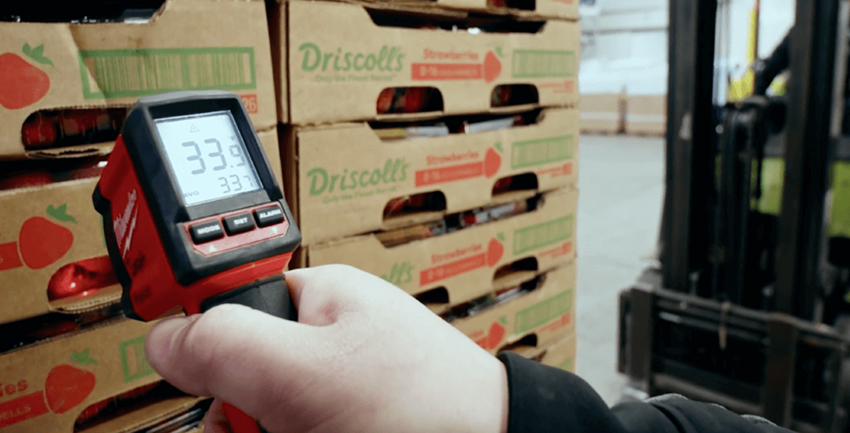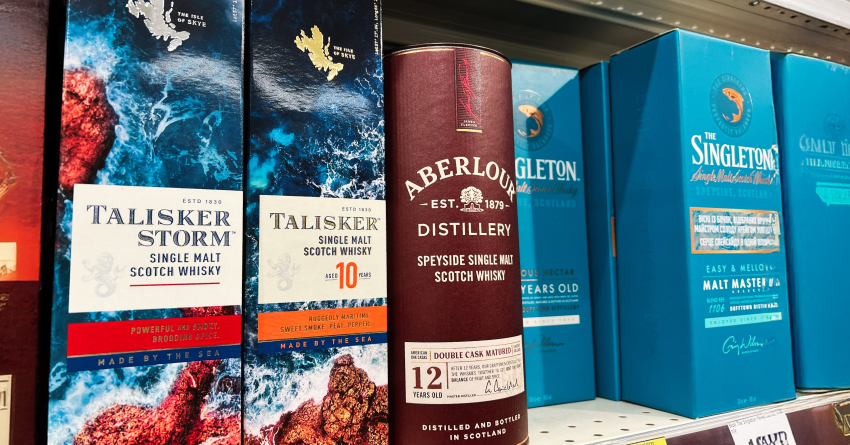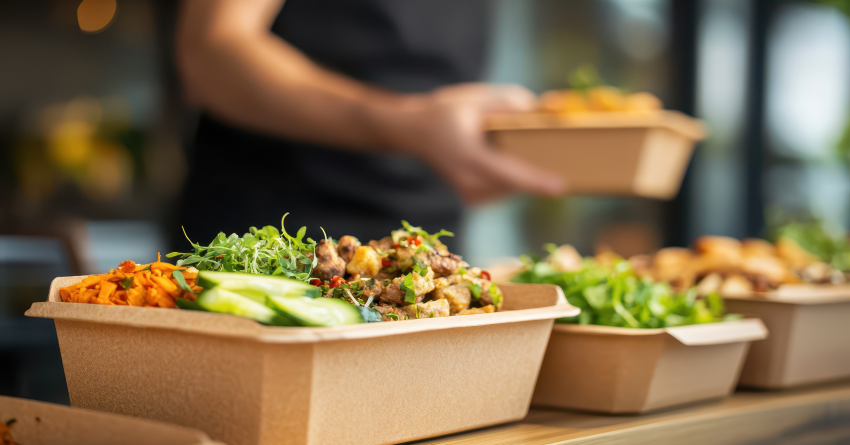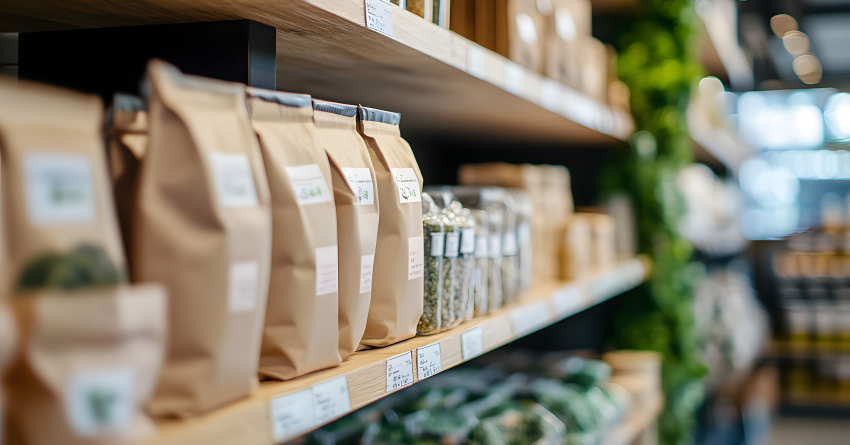Are Bioplastics the Future of Packaging?
May 14, 2025
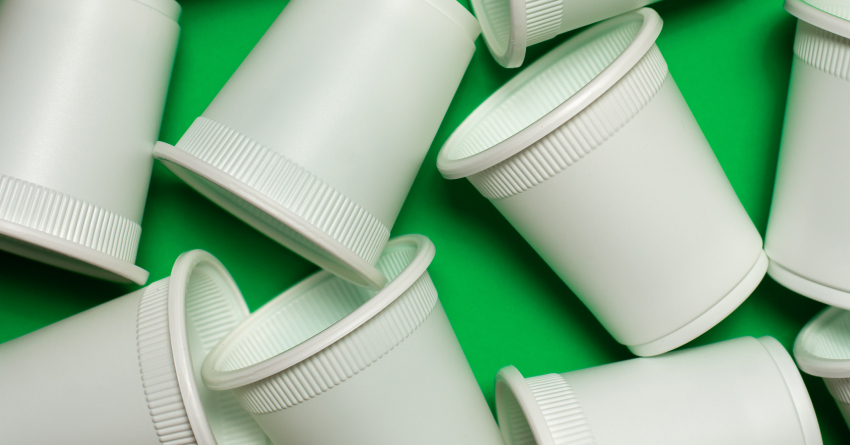
As consumers have gotten more and more concerned about the environment,, the packaging industry has seen a significant shift towards more sustainable solutions. When it comes to more eco-friendly materials, biodegradable plastic packaging made from bioplastics is a rising star. In this article, we’ll talk about what bioplastic packaging is, what it’s made from, how it’s being used and future market trends.
What is Bioplastic Packaging?
Bioplastic packaging is any packaging material that’s made from bioplastics, which are derived from biological substances instead of petroleum. Compared to traditional, petroleum-based plastics, bioplastics are biodegradable, which significantly reduces their environmental impact.
Globally, packaging accounts for 40% of plastic waste produced each year. In 2019, that added up to 142M tons, 60% of which (84M tons) was produced by the US, Europe and China. With global efforts to slow the impacts of climate change, minimize environmental impact and reduce waste, bioplastic packaging design is a smart alternative that’s both sustainable and strategic; because going green is good for business, too.
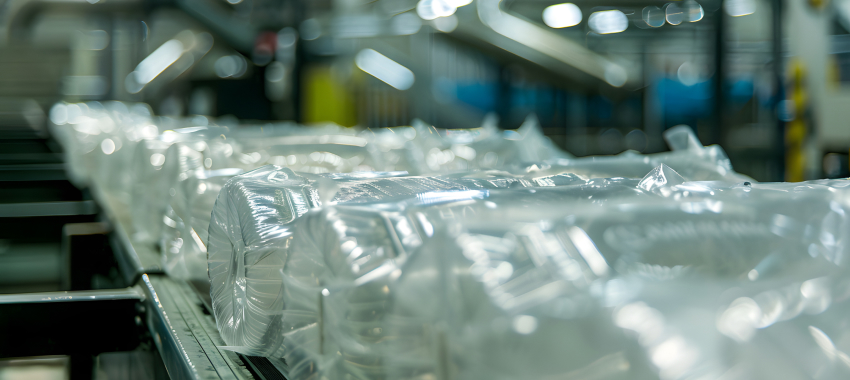
What are Bioplastics Made From?
Believe it or not, the first plastics were actually made from natural materials, like cellulose and shellac, before they were replaced by fossil-fuel plastics made from non-renewable petroleum. Bioplastics, on the other hand, are made from renewable biological or biomass substances, meaning they were once living organisms.
Here are some of the most commonly used materials and examples of bioplastic packaging.
- Biodegradable Polysaccharides
- Polylactide (PLA)
- Polyhydroxyalkanoates (PHA)
- Polybutylene Adipate Terephthalate (PBAT)
- Polybutylene Succinate (PBS)
Biodegradable Polysaccharides
Biodegradable polysaccharides include natural carbohydrates like corn, starch, cellulose, pectin and alginate. These naturally occurring polymers are both biodegradable and renewable, because they come from plants and marine organisms. They’re also non-toxic.
The properties of bioplastics made from polysaccharides vary depending on which biomass they’re derived from, but the most common use for this type of bioplastic is in food packaging and for things like disposable cutlery, reducing the amount of non-biodegradable waste that ends up in landfills every year.
Polylactic Acid (PLA)
Polylactic acid (PLA) is a polyester type polymer that comes from fermented plant starch, like corn, sugarcane or cassava root. Because the source material is fermented, production can include by-products that would normally be thrown away, like stems, husks and leaves. This reduces competition with food production.
The FDA recognizes PLA as safe, clearing the way for use in bottles, cups and plastic containers. PLA is also rigid and brittle, making it suitable for electronics packaging and other use cases where stiff, stable material is needed.
Polyhydroxyalkanoates (PHA)
Polyhydroxyalkanoates (PHA) is another naturally-derived source that’s gaining popularity in the bioplastic packaging market. Like polysaccharides and PLA, it’s also made from renewable and sustainable micro-organisms. But PHAs are produced from plant oils and sugars, making them more sustainable while reducing carbon emissions. PHAs are also fully biodegradable, including in soil and the ocean, making this a more compostable (and more versatile) option.
PHAs can withstand higher temperatures and often act as a good barrier against water vapor and gases. Non-toxic and FDA-approved for food contact, PHAs are useful for food and beverage packaging. PHA straws are also gaining popularity, replacing wasteful single-use plastic straws.
Polybutylene Adipate Terephthalate (PBAT)
Polybutylene adipate terephthalate (PBAT) is a type of thermoplastic polyester made from renewable resources like sugar cane and cornstarch. It’s actually a copolymer, made by combining adipic acid, terephthalic acid and butanediol. PBAT is biodegradable and compostable in certain environments, including soil.
PBAT can be blended with other biodegradable polymers, such as PLA, to improve its properties. It’s extremely versatile because it can be processed using conventional plastic manufacturing techniques. PBAT’s flexibility and toughness make it a good fit for a wide range of uses, including food packaging and biodegradable shopping bags.
Polybutylene Succinate (PBS)
Polybutylene succinate (PBS) is another thermoplastic polymer in the polyester family that’s made from bio-based sources, and is highly biodegradable. Its properties are similar to polypropylene: high tensile strength, high melting temperature, UV and chemical resistant and insoluble in water and alcohol.
PBS can be manufactured from monomers that are biologically derived (bacterial fermentation) and from petroleum sources. Combining bio-based composite materials with traditional polymers makes PBS more affordable, while still being more sustainable than single-use plastics. PBS is used to produce food containers and cosmetics packaging, including bottles, jars and tubes.

How are Bioplastics Made?
Broadly speaking, bioplastics are made by converting the sugar found in plants into a polymer. Sources include sugarcane, sugar beets, wheat, potatoes, tapioca and, most commonly in the US, corn.
First, the sugar needs to be extracted from the source plant; corn starch is extracted from corn kernels, starch is extracted from potatoes and sugar is extracted from sugarcane. This is done through a process called wet milling, where the source material is ground into a paste then put through a centrifuge to create separation, with additional chemicals sometimes added. Next, the starch or cellulose is fermented or gelatinized into a substance that can be polymerized. Finally, the polymer is shaped into its intended application (e.g., clamshell food packaging) using a process like injection molding.
The exact process for producing bioplastics depends on the source material and the type of material being made, with PLA and PHA being the most common bioplastics currently in use. For example, PLA can be produced by milling corn kernels to extract dextrose, which is fermented by bacteria or yeast to produce lactic acid. These molecules are then polymerized into PLA and processed into an end product. PHA polymers, on the other hand, are produced naturally by bacteria, with different types of molecules being combined to produce various bioplastic materials with differing qualities.
Bioplastic Packaging Market Trends
With global environmental concerns growing, the bioplastic packaging market is set to take off over the next decade. One recent study projects it will grow from $17.99B in 2023 to $87.98B by 2033, with food and beverage packaging as a primary driver and the biodegradable segment dominating the market.
Increasing public concern about the environmental impact of single-use plastics is the biggest factor spurring bioplastic packaging growth. As more consumers look for sustainable and eco-friendly products, more businesses will adopt biodegradable plastic packaging to minimize environmental impact while also taking advantage of an economically beneficial trend. Food and beverage packaging including drink bottles and take-out food containers are some of the most popular applications because they’re so widely used day to day.
Increasing regulatory support will likely play a key role in market growth, too, with many local and federal government agencies rolling out new policies aimed at monitoring and reducing plastic waste. The eCommerce market’s continued growth is also expected to drive bioplastics market growth. While Europe held the largest bioplastic packaging market share in 2023 at 33.6%, Asia Pacific is expected to see the fastest growth over the next ten years, driven primarily by increasing online shopping in China and India.
Despite the numerous growth drivers, manufacturing costs still present a challenge. Raw material prices can fluctuate and the bioplastics industry lacks the infrastructure that the traditional petrochemical industry has established, which keeps prices low and competitive. However, the high cost of production will likely be offset by growing consumer demand for sustainable options. As more companies turn to bioplastics, manufacturing costs will go down and usage will continue to expand—along with the many environmental benefits biodegradable plastic packaging made from bioplastics brings.
Partner with Ernest Packaging for Bioplastic Packaging Design
As a long-time proponent of sustainable packaging solutions , we’re big fans of bioplastic packaging design here at Ernest. Whether you’re looking to explore biodegradable options, reduce the amount of single-use plastic you’re producing or have an eco-friendly packaging idea you need help bringing to life, our team of design, manufacturing and automation experts is ready to help.
Let’s talk about how we can help bring about a better world by introducing bioplastic packaging solutions into your business strategy.
Packaging Design

